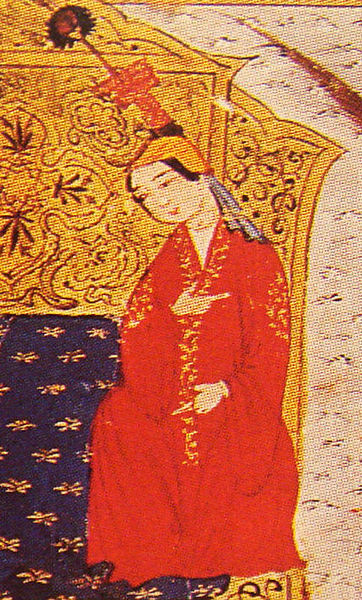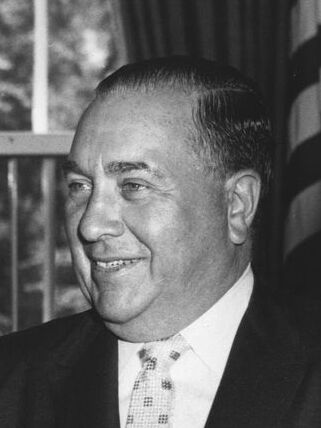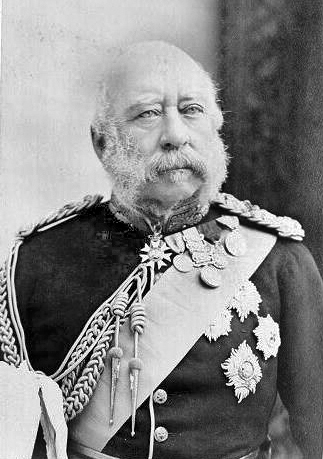
EXPIRES IN THE ARMS OF HIS GONDOLIER
April 19, 1824
Missolonghi, Greece
Lord Byron died like a poet.
The man who scandalized a nation; who took Europe by storm; who engaged in torrid and heart-breaking love affairs; who enraptured and delighted the reading public; who displayed his scintillating wit in verse and in conversation; who swam the Bosporus and fought alongside the Greeks for independence- this reckless romantic has died, a hero to humanity.
He died young, as a Romantic poet should, filled with a passion that burned itself out at an early age.
This revolutionary died fighting for Greek Independence, returning glory to the land of Achilles.
A poet to his last breath, he died in the arms of his Gondolier.
But seriously…
July 31st, 2022
The Romantic movement in England gave us two generations of prominent poets. The first generation- Wordsworth, Coleridge, and Blake- formulated a new style of poetry.
The second generation- most notably Lord George Gordon Byron, Percy Bysshe Shelley, and John Keats- took the movement in a new direction. They and their circle of friends were highly political, and lived lives that were unconventional and, in the case of Byron and Shelley, scandalous.
They created the cult of the poet.
No one did this more flamboyantly than Byron.
The public was also fascinated by the way they died, and the legends that were told of their deaths guaranteed their status as poetic icons.
Keats’s death created a prototype: the tragic artist, dying young, consumptive, promise unfulfilled, in a garret off the Spanish Steps in Rome.
Shelley, tempestuous in life, died in a tempest as he tried to sail across an Italian bay, a small book of poems by Keats in one of his pockets, dog-eared.
And Byron left this life as a revolutionary, attempting to win freedom for Greece, the birthplace of Western culture.
The Scandal
In April, 1816, Lord Byron was 28-years-old, already famous for his poetry and infamous for his affairs, most notably with his half-sister Augusta. One year previous he had gotten married to a woman with whom he was incompatible, apparently for the appearance of propriety. The marriage was doomed from the honeymoon- during which, dagger drawn, he threatened suicide while pining for Augusta- and lasted only a year.
The marriage produced one daughter, Ada.
Hounded by creditors and scandals, he left England, never to return.
The Hedonist
Byron landed in Venice, which he referred to as his “Sea-Sodom.”
He lived the life of a hedonist. In addition to “a string of low attachments,” he kept one tempestuous mistress after another; they seemed to come and go like the Sirocco, the stormy south wind.
He carried on his affairs in a rented palazzo where he kept, in addition to fourteen servants, a fox, a wolf, ten horses, eight enormous dogs, three monkeys, five cats, an eagle, a hawk, a tame crow, and a falcon- and on the staircase five peacocks, two guinea-hens, and an Egyptian crane.
His fame, money, and personality attracted an entourage, including a gondolier named Giovanni Battista Falcieri, but known as Tita, “a fine fellow with a prodigious black beard.”
Another companion in Venice was Shelley. (They had met in 1818, spending the summer together at Lake Geneva, where Byron had rented the Villa Diodati. A local Hotelier provided telescopes to his guests to allow them to peek at the laundry of his female “guests” drying the villa. One evening, after a discussion of the supernatural, Byron issued a challenge: who could write the best ghost story. Mary Shelley won by writing Frankenstein.)
Now in Venice the two poets forged a deeper friendship. Byron would rise at noon and meet Shelley for breakfast; they would gallop on horseback at sunset through the pine-forest. Shelley said he was “as mad as the winds.”
The Dreamer
Shelley was influenced by the philosophy of William Godwin, as outlined in his book, Political Justice. Godwin rejected conventional morality, including religion and marriage. Shelley was so taken with these ideas that he stole Godwin’s sixteen-year-old daughter Mary (and her sister) and fled to the Continent, where the three of them lived together. At one point Shelley, a proponent of free love, tried to involve Mary’s sister and his best friend in “unconventional” sexual relationships with himself and Mary, apparently without success.
They lived one step ahead of their creditors. While Byron consorted with his “string of low attachments”, Shelley found himself enmeshed with bankers, only because, dissolute with money, he was ever forming schemes to draw upon his inheritance through post-obit bond sales.
He wrote to Harriet (the wife he had abandoned for Mary), asking her to join them on a strictly platonic basis- and to bring money. (When the trio returned to England, they arrived owing the boatman who ferried them across the Channel. He followed them to Harriet’s house, waiting outside for two hours while Shelley wheedled the money out of his ex.)
In addition to unfaithfulness, immorality, impecuniousness, and general irresponsibility, Shelley was a dreamer. He was on a familiar basis with phantoms; he had visions, daydreams, and hallucinations, which he didn’t seem to distinguish from reality.
One day in his wanderings through Europe Shelley decided to adopt a beautiful little girl he saw on the road, and was surprised when her father said she was not available.
Free Love
Byron had a magnetic effect on people, either to attract or repulse.
One woman experienced both. She had an affair with him which produced a daughter, called Allegra.
The mother’s name was Jane Claremont, but she went by Claire. She was also the sister of Mary Shelley, the same sister who accompanied Mary on her elopement through Europe.
After the affair, Byron, tired of her, and rejected all her attempts to reconnect with him. He took the girl from her mother (as a man in his station had the power to do) and stashed her in a convent at Bagnacavallo, Italy, to be raised by the nuns, not allowing Claire to see her.
Claire, the trusting young woman who was sister-in-law to one poet and in love with another, soured later in life, rendering this judgment:
“Under the influence of the doctrine and belief of free love I saw the two first poets of England … become monsters of lying, meanness cruelty and treachery – under the influence of free love Lord B became a human tyger slaking his thirst for inflicting pain upon defenceless women who under the influence of free love … loved him.”
The Revolutionary
Byron eventually wearied of his life in Venice’s “empty oyster-shell” and “settled down” with twenty-year-old Teresa Guiccoli, a married woman who burned her hats as soon as she bought them. Her family were revolutionaries (Italy at this time was under the thumb of Austria), and Byron soon found himself attending meetings deep in the forest as part of the secret society of the Carbonari.
His brush with revolution would become a lifetime commitment. He was asked by the British Philhellenes (a group dedicated to fighting for Greek independence from the Turks) to go to Greece.
He went with dreams of rekindling the spirit of ancient Athens and Sparta.
He put voice to his quest in a poem written on his 36th birthday:
The sword, the banner, and the field,
Glory and Greece around me see!
The Spartan, borne upon his shield,
Was not more free.
If thou regret’st thy youth, why live?
The land of honourable death
Is here:- up to the field, and give
Away thy breath!
“Seek out, less often sought than found,
A soldier’s grave- for thee the best:
Then look around, and choose thy ground,
And take thy rest.
He soon found that Greece was not ready for independence. The Greeks didn’t feel any kinship with their ancient ancestors, and they fought more among themselves than with the enemy.
He used his personal fortune to hire 600 Suliotes (local fighters who were notoriously unreliable), who proceeded to lay siege to the town they were supposed to be defending. Byron disbanded the unit (keeping 56 as personal bodyguards), giving the entire brigade a month’s severance. He then rehired them, because they were the only soldiers available.
Despite the sparkling uniforms the ranks and the rhetoric, there would be no glorious battles; only infighting and backstabbing.
He took it upon himself to bring the rival Greek factions together. He wore himself out trying, living on dried toast, vegetables and cheese, and not sleeping. He wasted away in frustration, knowing his lofty dream was doomed. Urged to leave the swamp that was Missalonghi, he refused. He was determined to see it through.
“Since I have been here, I have seen and felt quite enough to try the temper of any man but I will remain here, while there is a gleam of hope.”
There was nothing romantic or glorious about Byron’s sojourn in Greece, but it was heroic. He used up the last days of his life in a noble cause, dying on April 19, 1824, essentially of worry and starvation; the man who had scandalized Europe was now hailed as a freedom fighter.
The Legends
Byron, Shelley, and Keats all had admirers who managed their legends after their deaths.
Tita, ever-faithful servant who never left the house the last weeks of Byron’s life, claimed that in the end he moistened the lips of the dying poet and caught his last words: “Augusta… Ada…”
The death scene captured the attention of no less than the prime minister of Great Britain, Benjamin Disraeli, who kept the romantic illusion alive by tracking down Tita and bringing him to England, where he got him a job working for his father.
In fact, Byron was soon forgotten in Greece, where they valued him not for his poetry but for his money; two days after his death a British ship arrived with 30,000 gold sovereigns and 50,000 Spanish dollars.
Shelley’s body was cremated on the beach where he washed up, in a strange pagan ritual devised by his friend Edward John Trelawny. It had to be cremated because fish had eaten the body to an unrecognizable state, but that didn’t stop Louis Fournier from claiming that Mary Shelley knelt before a ‘miraculously undamaged corpse.’
In fact, Shelley had no business being out in the storm: he had never learned to swim.
Keats’s friends Joseph Severn and Charles Brown added a mystique to his death by inscribing on his tombstone an accusation that malicious enemies conspiring against him had shortened his life.
In fact, he died of a common disease, and the contents of his apartment were burned to reduce the spread of infection. Keats himself, a solid Englishman who had once studied to be a doctor, sensibly requested only one line as an epitaph:
Here lies one whose name was writ in water.
The Aftermath
Being in the orbit of a Romantic poet was not healthy. As unromantic as their deaths actually were, there was some truth in the legend: their flames did in fact burn out early (Byron at age thirty-six, Shelley at twenty-nine, and Keats at twenty-five). Many of those close to them also went at an early age.
Many took their own lives:
John Polidori, Byron’s physician and travelling companion through Europe until Byron tired of him and jettisoned him; Benjamin Haydon, a painter who was part of the poets’ literary circle; Mary Shelley’s half-sister Fanny; and Shelley’s first wife Harriet, who drowned herself in the Serpentine after he had abandoned her. She was pregnant.
And then there were the children.
Byron’s daughter Allegra died at age five of an outbreak of Typhus, borne by the pestilential marshes of the Romagnol surrounding the convent.
Shelley’s son Charles died of tuberculosis at age eleven; his daughter Clara died at age one in Venice; his baby William died in Rome and was buried under the pyramid of Caius Cestius in the Protestant Cemetery, where Keats, and then Shelley himself, would be buried.
Not everyone ended badly. Byron’s one legitimate daughter, Ada, defied the odds and led a long, productive life, inventing the precursor to the computer.
Ianthe Shelley also defied her father’s unconventional life: she married a banker.
Sources
The Greek Adventure, Lord Byron and Other Eccentrics in the War of Independence, David Howarth
The Last Days of Lord Byron, William Parry
Young Romantics, Daisy Hay
Disraeli, Andre Maurois







